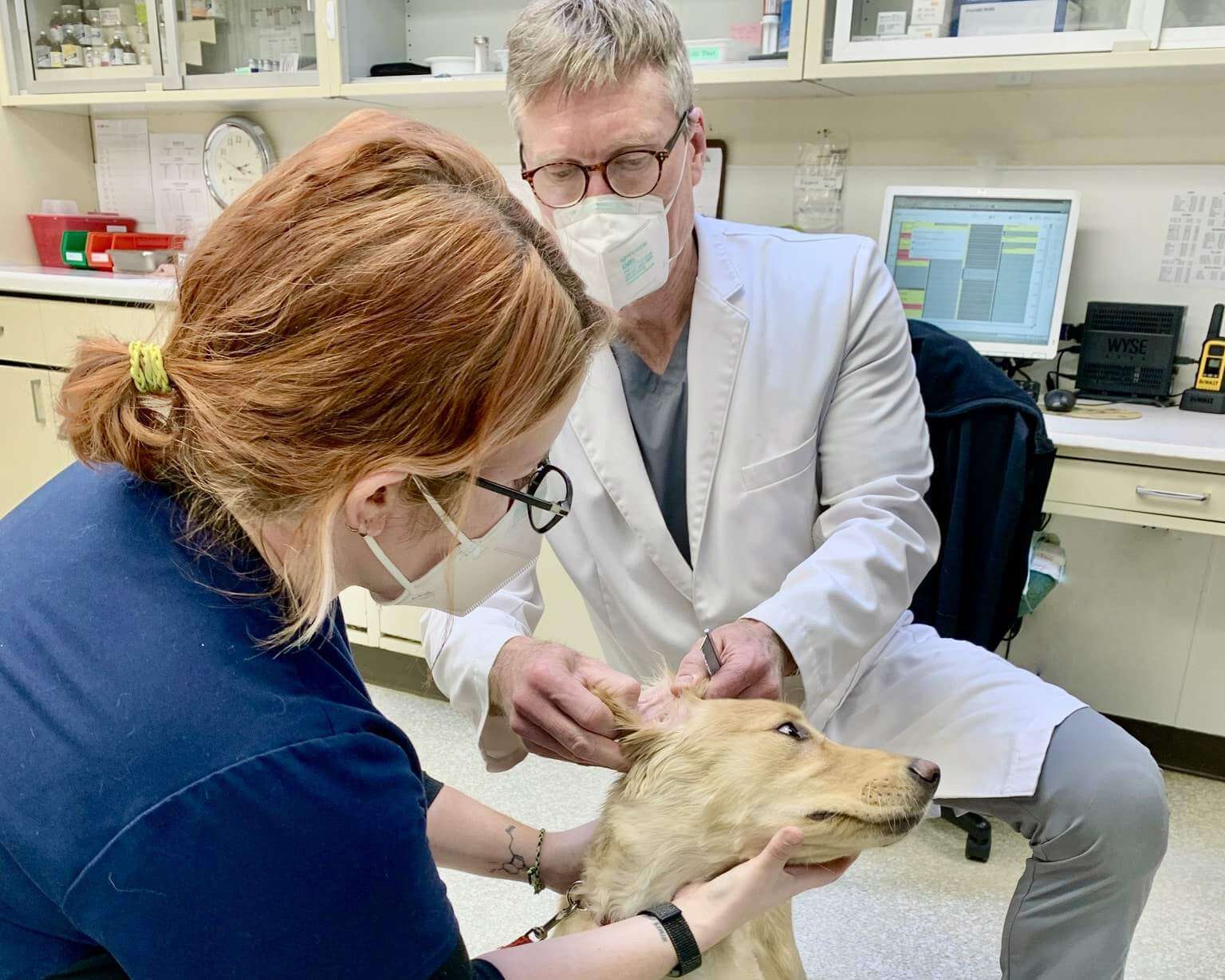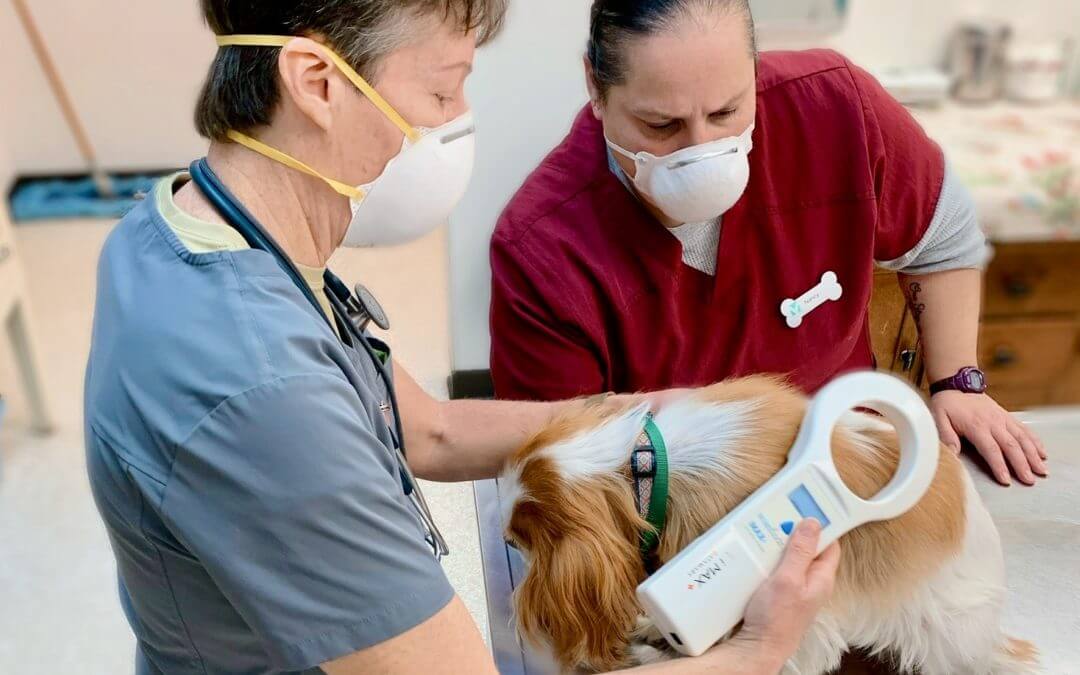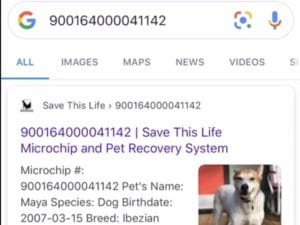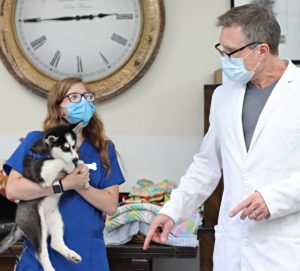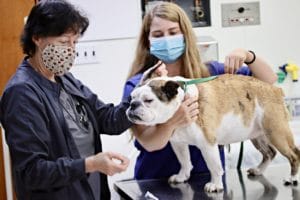It’s a moment that every pet owner dreads: your dog is missing. Luckily, you had them microchipped, so you’ve significantly improved the odds that you’ll find your lost microchipped dog and they’ll be safely returned to you.
No one wants to lose their beloved pet, but pet microchips are not GPS trackers. Microchips help you find your lost dog if they end up at a local animal shelter, because their microchip can be scanned to reveal your address and personal information. With this info, it’s much more likely you’ll see your pet again.
Of course, just because your lost dog is microchipped doesn’t mean you’ll automatically find your lost microchipped dog returned to you. Fortunately, you can quickly learn what steps to take to maximize the chance to find your lost microchipped dog.
Once you’ve followed the tips below and taken care of the microchip details, see the Paoli Vetcare Ultimate Guide To Find a Lost Pet for everything else you can do while waiting to hear from the microchip company.
Find Your Lost Microchipped Dog
Table of Contents
- 1 Find Your Lost Microchipped Dog
- 2 Important — Register the Microchip!
- 3 $45 Save This Life™ Microchip — Google a Lost Pet!!
- 4 Is Your Contact Information Updated on the Registry?
- 5 Can You Track Your Dog with a Microchip?
- 6 Ways to Find your Lost Microchipped Dog
- 7 Can You Scan a Dogs Microchip With Your Phone?
- 8 Can a Microchip Be Removed from a Dog?
- 9 Final Thoughts
Important — Register the Microchip!
Next to getting your dog microchipped as soon as possible, registering their chip is a vital step to ensuring that they’ll be returned home quickly if they ever get lost. Your vet or shelter will provide you with the microchip’s ID number and the online registry you’ll need to go to in order to register the chip with your information.
Even if a lost dog is microchipped, scanning the chip cannot match the number on the scanner with the owner if it is not registered. Check out my blog post — How to Register a Microchip — to learn all about how microchips work, which type to choose, and the step-by-step instructions to register your microchip now, if you haven’t already.
All pets microchipped at Paoli Vetcare are registered by our great team as soon as the procedure is completed, so if we did your microchip — and your contact information hasn’t changed — you are all set! Newer microchips by Save This Life™ include an indestructible metal collar tag stamped with a number.
When someone finds your dog with a Save This Life microchip, as soon as they type the number on the tag into Google, you will get text and email notifications with contact information and location. Click — How Do I Find Out Who Owns a Microchipped Dog? — to discover all the ways a microchip can reunite a pet with their family.
A microchip is meant as a permanent form of identification for your pet, to prove ownership, and to help contact you when your dog is lost, so it is vital to find out if the shelter or veterinary practice that inserted the chip finished the process by sending your contact information to the chip provider. If you don’t register, you’ll decrease the odds you’ll find your lost microchipped dog. If they did not, register your dog’s microchip right when you bring them home!
When considering chipping your dog, you may wonder — what are the odds you’ll find your lost microchipped dog? Well, the odds of finding your pup are up to 238% higher if your dog is microchipped and registered!
Can a Dog Be Microchipped But Not Registered?
Yes. You need to register your dog’s microchip after it is inserted, and make sure that it’s registered by local shelters. If you adopt a dog from a previous owner, their microchip could potentially be unregistered. Use your microchip’s lookup tool to ensure that your pet’s chip is registered.
$45 Save This Life™ Microchip — Google a Lost Pet!!
Use a simple Google search to reunite pets with families with a Save This Life™ microchip. Their microchip comes with an aluminum, machine stamped ID tag with “Search this # to Find my Family,” as opposed to a plastic, ink stamped tag or a tag with no microchip number on it, like their competitors.
The number links to a photo of your pet and a secure contact form. You will be sent a text, email, and Google map with your pet’s location.
Standard microchips require the microchip number to be read by a scanner or from an ID tag and then called in to one of many microchip databases, delaying notification of the distressed owner.
Save This Life’s innovative technology has revolutionized the pet recovery process — make an appointment today!
Coverage for up to $1,000 in emergency care for accidents that may occur while your pet is lost is included.
The microchips are ISO compliant, readable by universal scanners, and coated to prevent migration.
There are no registration fees, no annual fees and no fees to update information or transfer pet owners.
You may enjoy watching the one minute video that explains the technology at SaveThisLife.com.
Is Your Contact Information Updated on the Registry?
The contact information that your dog’s chip is registered under is how the shelter or vet will be able to reunite you with your lost pet. To find your lost microchipped dog, it’s critical that you always keep that information correct and up-to-date.
If you are not sure — and you have your microchip identification number — check the American Animal Hospital Association (AAHA) Microchip Lookup Tool to make sure your information correct.
If you move or change phone numbers, an item high on your to-do list should be to update your pet’s chip registry. Some online registers are free, some charge you one time when you set up the registration, whereas others may charge you each time you need to update your information.
Check out my blog post — How Much Does It Cost to Microchip a Dog — to learn about all the costs involved and how to get the best deal.
How Do I Check My Dog’s Microchip Details?
Every registry allows you to create an online account where you can check your dog’s microchip details and change your information. Click — How to Search the Pet Microchip Registry — to learn more. Otherwise, you can always call the registry directly to update information as needed.
Where Can I Check My Microchip?
If you are unsure where you can check your microchip or don’t have the microchip ID number, you can contact your vet or the shelter where you adopted your dog. They will be able to give you the number if they inserted the chip. Further explanation can be found at How Do I Know My Pet’s Microchip is Registered?
If you can’t get the ID number this way, your vet must scan the chip to find the number and look up the provider. They can tell you whose contact is associated with that chip or refer you to the correct microchip company to set up your current contact information.

Can You Track Your Dog with a Microchip?
A question commonly asked by new pet owners is, “Can you track a lost pet with a microchip?” The short answer to this question is — NO — a microchip has no tracking ability. It will help you find your lost microchipped dog, but it won’t send location information. You can learn why at: Can a Microchip Work as a GPS Tracker?
What are microchips exactly? Pet microchips are tiny electronic transponders that are about the size of a grain of rice. Microchips are inserted under the skin between your dog or cat’s shoulder blades by a vet, vet tech (nurse), or by a staff member at an animal shelter. These small Radio-frequency identification (RFID) tag implants are activated when scanned by a shelter or vet to provide a numerical identifier unique to the animal that allows someone to locate the owners.
The chip is loaded with only two pieces of information to help find a lost microchipped dog: the ID number and the name and number of the microchip company that manufactured it. Whoever scans the chip must work with the company or the online universal microchip registry to find the pet’s owner. Microchips are a tool for uniting lost pets and owners, but they are only useful once your dog winds up at a shelter or veterinarian’s office.
That said, there are a few different dog collar GPS tracking devices on the market that you can use to track your dog and find them while they’re still lost out there. They work extremely well and I highly recommend you invest in one if you can afford it.
The significant difference between GPS tracking devices and the RFID microchips is that the tracker emits a signal that connects to an app or other system that show you where your dog is in real-time. In contrast, a microchip must be scanned by a pet professional and only provides contact information.
Ways to Find your Lost Microchipped Dog
While your dog’s microchip can’t help you track them, I’ll show you how to find a lost microchipped dog and get your pup home faster.
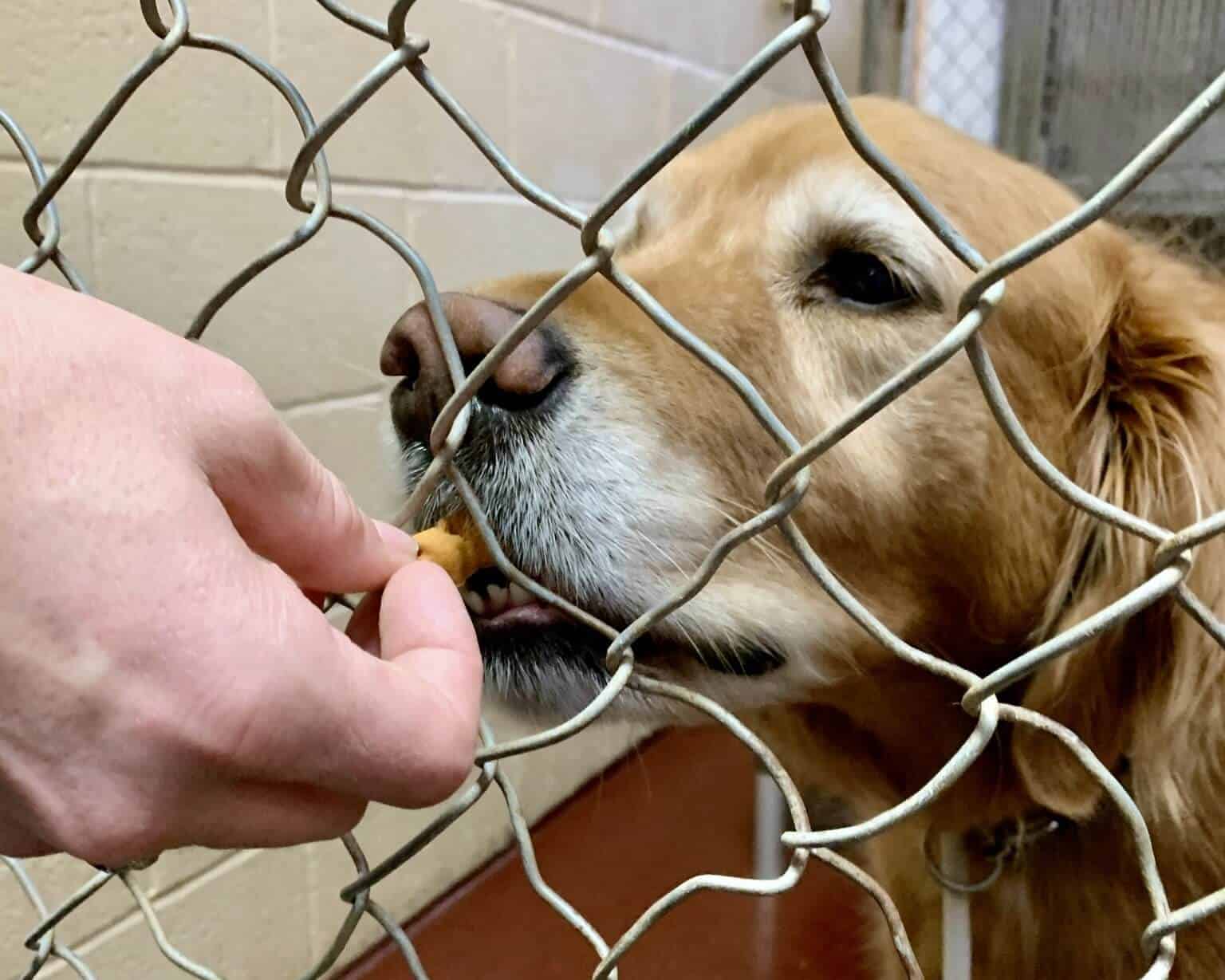
Enter the Microchip Number in the Online Registry
To be sure you can find your lost microchipped dog — the minute you discover your dog is missing — you should enter their microchip ID number in the AAHA Pet Microchip Lookup tool to verify your contact information is correct. This number would have been provided to you when you adopted your dog from a shelter or had them microchipped at a vet or pet store.
It’s the number you would have used when initially registering their chip. You should always keep their ID number in an easy to find place, like along with your dog’s medical records, on your computer, or entered as part of a contact card in your phone.
Entering the microchip number in the registry won’t give you your pet’s location, but it can help you see if their chip has been scanned anywhere recently and allow you to mark your dog as lost in the system. When anyone scans the chip, the microchip company will be alerted and should contact you right away.
Wait for the Microchip Company to Contact You
You know your dog’s microchip is registered, your contact information is up to date, and you’ve entered their number into the online registry to report them missing. Now it’s just a matter of waiting. When people find your lost microchipped dog, the shelter or vet they wind up at will be able to scan their microchip and you can pick them up.
Call Local Shelters and Animal Hospitals
Even after you’ve entered your dog’s microchip into the registry, you should still be active in searching for them — giving you the best chance to find your lost microchipped dog. You may have thought of putting up flyers online or handing them out around town and calling the local animal shelters and pet hospitals, but there is so much more you can do. For 15 ways to find your lost dog read The Ultimate Guide to Find a Lost pet now.
Shelters and vets have access to microchip scanners and frequently use the microchips to identify lost animals and get them home. They will be able to scan a lost microchipped dog and they can keep an eye out for dogs matching your pet’s description. If you send them your contact information and a picture of your dog, they will contact you immediately if they are brought in.
If you adopted your dog from a shelter, you should also reach out to them right away. If your dog was microchipped at the shelter, they will have the chip information on file. The shelter may have registered the dog to themselves before adoption or they may have registration records linking the microchip to the owner that surrendered the dog. If the contact information wasn’t changed to you, they may be contacted if they find your lost microchipped dog is scanned somewhere.
Can You Scan a Dogs Microchip With Your Phone?
Your pet’s microchip is not designed to be scanned with a smartphone. There are specialized scanners used by veterinarians and shelters to scan your dog’s microchip, and these scanners are readily available for home purchase. You can buy one yourself if you want to check your pet’s microchip on your own.
Can Any Vet Scan a Microchip?
While veterinarians aren’t required to scan your dog or cat for a microchip, they can do so. Shelters often scan for chips, and a veterinarian has an obligation to ensure your pets’ total health and safety.
Can a Microchip Be Removed from a Dog?
It’s safe to remove a microchip from any dog or cat, though it’s rare when microchips are directly removed. They can be troublesome to take out, since it requires a surgical procedure from your veterinarian.
Final Thoughts
Learning how to find your lost microchipped dog can make searching for — and hopefully recovering — your beloved pet less stressful. Remember — for the chip do its job — you must register that microchip right when you bring them home and always keep your contact information current. Taking the time to complete these simple steps will ensure that if your dog ever does get lost, whoever finds your lost microchipped dog will be able to contact you fast!
